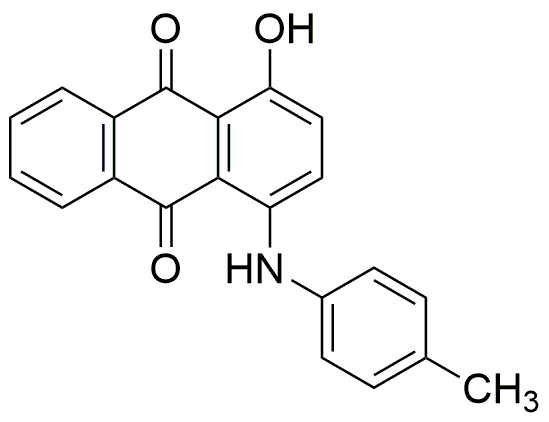Quinizarin blue is widely utilized in research focused on:
- Dyes and Pigments: Commonly used as a dye in textiles and plastics, providing vibrant color with excellent lightfastness, making it ideal for outdoor applications.
- Analytical Chemistry: Employed as a reagent in various analytical techniques, such as UV-Vis spectroscopy, for the detection of metal ions, enhancing the accuracy of quantitative analysis.
- Biological Research: Utilized in histology and microscopy for staining purposes, helping researchers visualize cellular structures and processes under a microscope.
- Environmental Monitoring: Used in the assessment of water quality, particularly in detecting pollutants, thereby aiding environmental scientists in monitoring and managing ecosystems.
- Art Conservation: Applied in the restoration of artworks and historical artifacts, where its stability and color properties help preserve the integrity of cultural heritage.
General Information
Properties
Safety and Regulations
Applications
Quinizarin blue is widely utilized in research focused on:
- Dyes and Pigments: Commonly used as a dye in textiles and plastics, providing vibrant color with excellent lightfastness, making it ideal for outdoor applications.
- Analytical Chemistry: Employed as a reagent in various analytical techniques, such as UV-Vis spectroscopy, for the detection of metal ions, enhancing the accuracy of quantitative analysis.
- Biological Research: Utilized in histology and microscopy for staining purposes, helping researchers visualize cellular structures and processes under a microscope.
- Environmental Monitoring: Used in the assessment of water quality, particularly in detecting pollutants, thereby aiding environmental scientists in monitoring and managing ecosystems.
- Art Conservation: Applied in the restoration of artworks and historical artifacts, where its stability and color properties help preserve the integrity of cultural heritage.
Documents
Safety Data Sheets (SDS)
The SDS provides comprehensive safety information on handling, storage, and disposal of the product.
Product Specification (PS)
The PS provides a comprehensive breakdown of the product’s properties, including chemical composition, physical state, purity, and storage requirements. It also details acceptable quality ranges and the product's intended applications.
Certificates of Analysis (COA)
Search for Certificates of Analysis (COA) by entering the products Lot Number. Lot and Batch Numbers can be found on a product’s label following the words ‘Lot’ or ‘Batch’.
Numéro de catalogue
Numéro de lot/série
Certificates Of Origin (COO)
This COO confirms the country where the product was manufactured, and also details the materials and components used in it and whether it is derived from natural, synthetic, or other specific sources. This certificate may be required for customs, trade, and regulatory compliance.
Numéro de catalogue
Numéro de lot/série
Safety Data Sheets (SDS)
The SDS provides comprehensive safety information on handling, storage, and disposal of the product.
DownloadProduct Specification (PS)
The PS provides a comprehensive breakdown of the product’s properties, including chemical composition, physical state, purity, and storage requirements. It also details acceptable quality ranges and the product's intended applications.
DownloadCertificates of Analysis (COA)
Search for Certificates of Analysis (COA) by entering the products Lot Number. Lot and Batch Numbers can be found on a product’s label following the words ‘Lot’ or ‘Batch’.
Numéro de catalogue
Numéro de lot/série
Certificates Of Origin (COO)
This COO confirms the country where the product was manufactured, and also details the materials and components used in it and whether it is derived from natural, synthetic, or other specific sources. This certificate may be required for customs, trade, and regulatory compliance.


